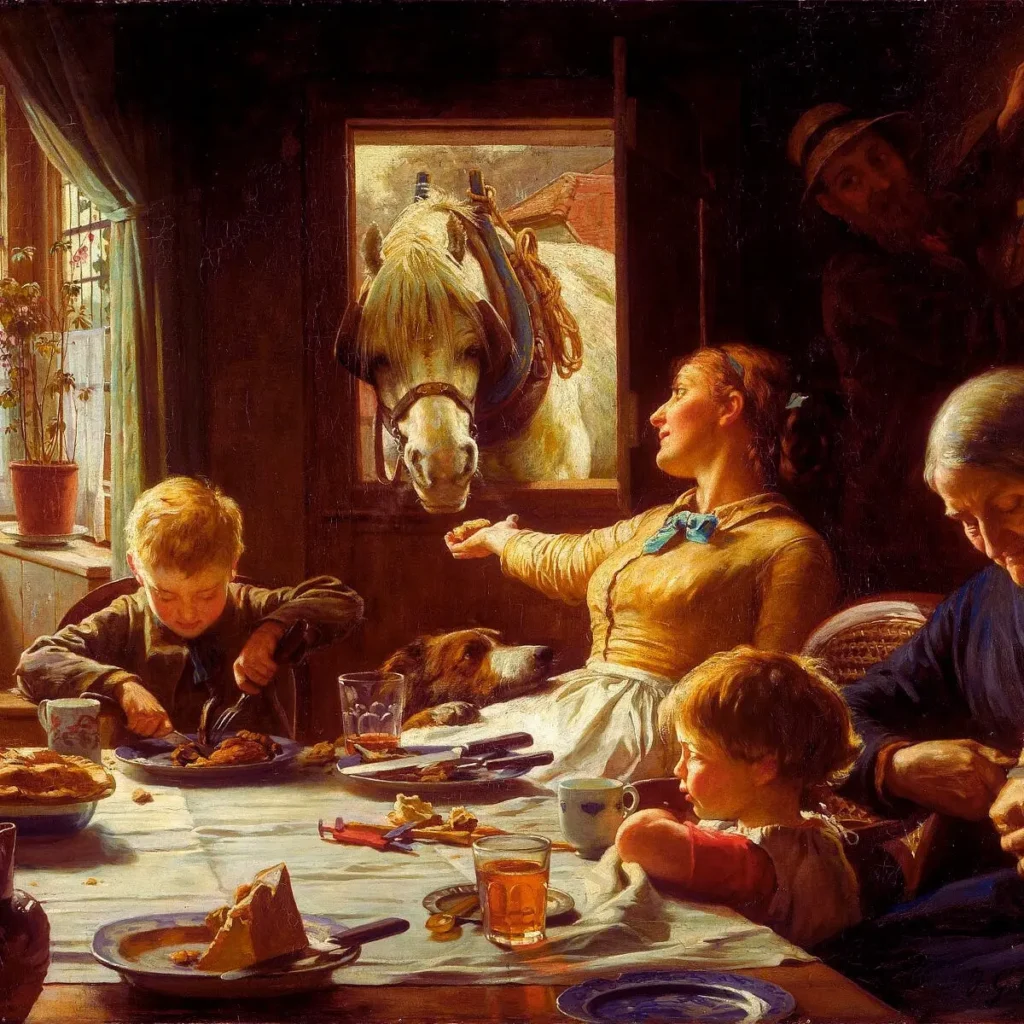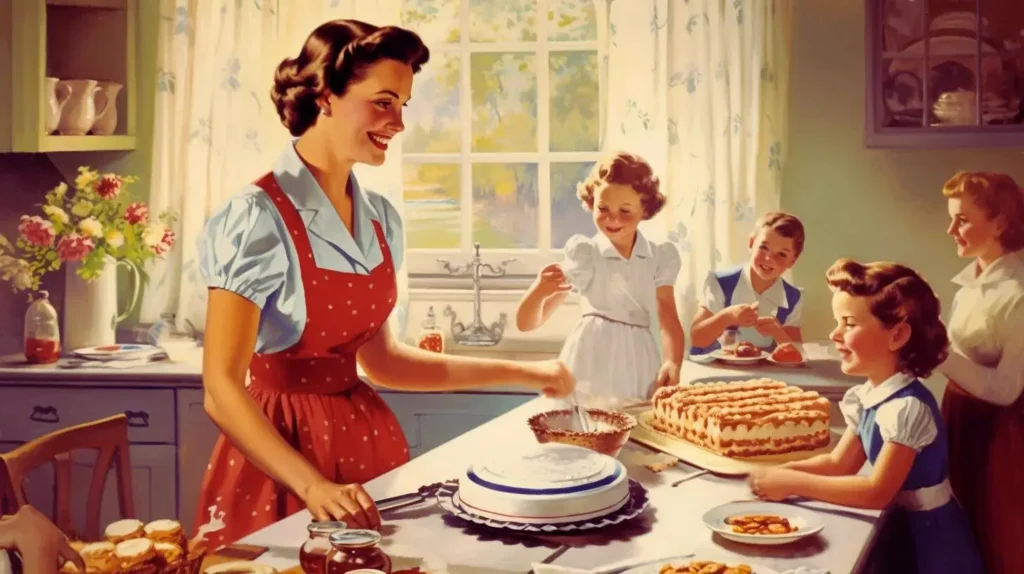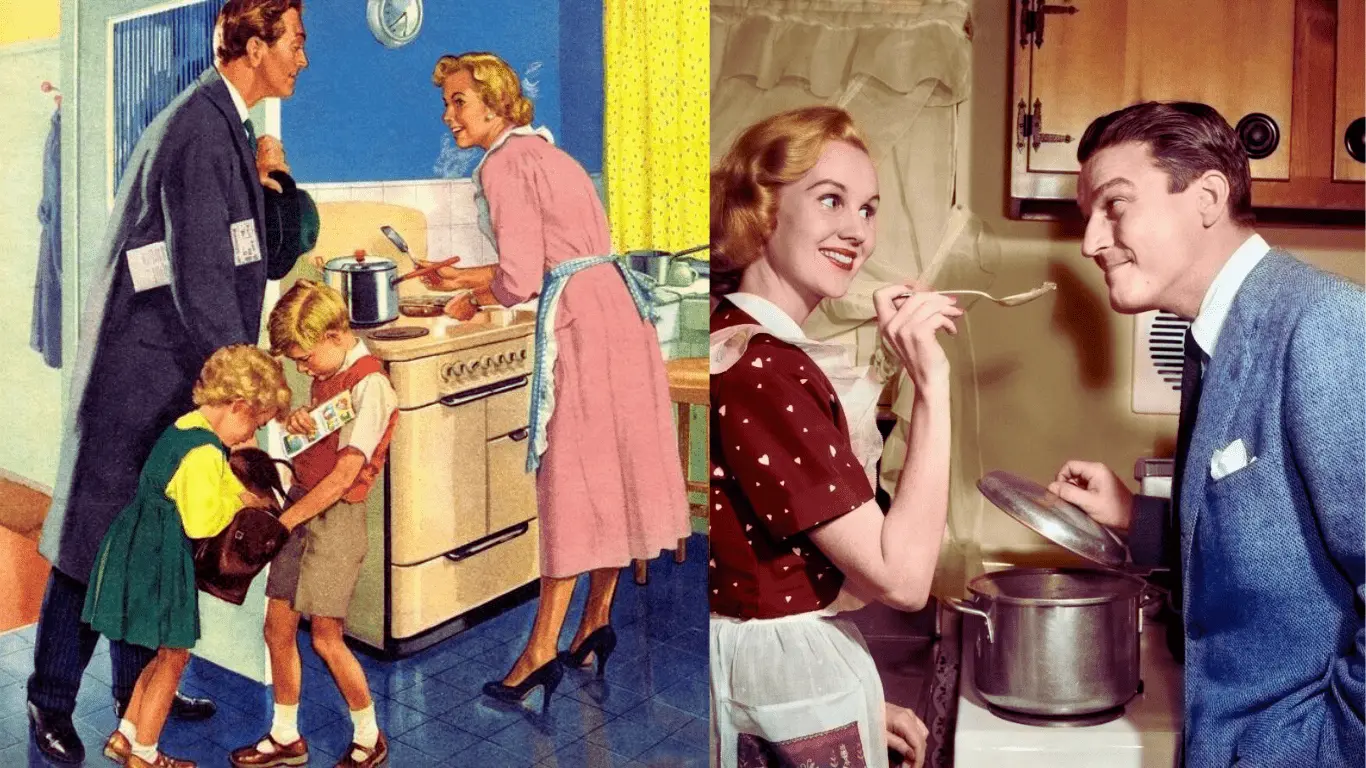A “tradwife,” short for traditional wife, refers to a woman who embraces a return to pre-feminist gender roles primarily focused on homemaking and supporting her husband’s career over her own professional or personal aspirations. This lifestyle choice is marked by a commitment to traditional values that prioritize domestic responsibilities such as cooking, cleaning, and child-rearing, while the husband provides financially for the family. The term gained traction through social media where women share and promote their lifestyles that align with these ideals. Despite its historical roots, the tradwife movement is often seen as a modern subculture that resonates with women seeking a more defined and nostalgic role within their households. The concept has stirred both interest and controversy, reflecting differing opinions on gender roles and women’s rights in contemporary society.
Origins and Evolution of the Tradwife Concept
Historical Context

The tradwife ideal romanticizes a past where women predominantly assumed domestic roles, yet historical evidence suggests a more complex and less idyllic reality. Tradwives often promote a vision of the past where women were primarily homemakers and submissive to male authority. However, historical accounts indicate that women in these roles often experienced significant social and personal limitations.
This idealization overlooks the struggles women faced, including lack of autonomy, recognition, and rights. Many women who lived through these times campaigned for liberation and greater equality, which counters the tradwife narrative of a preferable, simpler past. Additionally, the economic viability of a single-income family has become increasingly unrealistic in modern contexts, further complicating the practicality of the tradwife lifestyle today.
In essence, while the tradwife movement seeks to revive a notion of traditional gender roles, it often glosses over the historical challenges and sacrifices women endured, and fails to address the economic and social changes that have reshaped family dynamics and gender roles in the contemporary world.
Modern Resurgence
The resurgence of the “tradwife” concept among modern audiences can be attributed to several factors:
- Nostalgia for Traditional Roles: Some see the tradwife lifestyle as a romanticized return to traditional roles, where women focus primarily on homemaking and nurturing their families.
- Social Media Influence: The trend has been significantly amplified by social media, where content creators promote and advocate this lifestyle, sharing their daily activities and philosophies, thus reaching a wide audience and attracting followers.
- Cultural and Political Reaction: It’s also a reaction against modern feminist movements, with some adopting the tradwife role as a statement against what they perceive as the excesses of contemporary feminism.
- Seeking Stability and Structure: Amidst modern complexities, the clear, structured roles within a tradwife lifestyle may offer a sense of stability and purpose for some individuals.
Defining a Tradwife
Core Characteristics

The core traits and behaviors of a tradwife revolve around a preference for traditional gender roles and family structures. Here are the key characteristics:
- Domestic Focus: A tradwife prioritizes homemaking above career ambitions, dedicating her life to managing household duties and raising children.
- Submissiveness: Often, tradwives embrace a submissive role within their marriage, prioritizing their husband’s needs and decisions over their own.
- Economic Management: They are typically responsible for budgeting and managing the family’s financial resources efficiently to ensure the family’s needs are met.
- Self-Sacrifice: Tradwives may view their role and the subordination it involves as a form of self-sacrifice for the benefit of their family and the upbringing of their children.
- Cultural and Religious Values: Many align closely with conservative cultural or religious values that emphasize traditional gender roles and family structures.
These characteristics combine to form a lifestyle that is centered around traditional, often idealized notions of what a wife’s role within the family should be.
Daily Life of a Tradwife
The typical daily activities of a tradwife are centered around managing the household and supporting her family’s needs. Here’s a general outline of a tradwife’s daily routine:
- Morning Routine: The day usually begins early, with tradwives tending to household chores such as cooking breakfast, preparing lunches, and organizing the house for the day.
- Housework: Significant time is spent on maintaining cleanliness and order in the home. This includes tasks like cleaning, laundry, and possibly gardening or other home maintenance duties.
- Childcare: For those with children, childcare is a primary focus, which involves everything from educational activities to outdoor play and general supervision.
- Meal Preparation: Cooking meals for the family is a central role, ensuring that dietary needs are met and that mealtime is a family-focused occasion.
- Community Engagement: Some tradwives also reach out to their community through volunteer work or participating in community-oriented activities.
- Personal Time: Depending on individual schedules and family needs, personal time for hobbies or relaxation is also part of the day.
These activities reflect the tradwife’s commitment to a traditional role centered on home and family management.
Social and Cultural Perspectives
Support and Criticism
The tradwife movement garners both support and criticism, reflecting a polarized view of its values and implications:
Support
- Advocates for Traditional Roles: Supporters of the tradwife lifestyle praise the emphasis on traditional family roles, where the woman dedicates herself to homemaking and nurturing the family.
Criticism
- Accusations of Sexism: Critics argue that the tradwife movement romanticizes sexism and reinforces outdated gender roles that limit women’s choices and opportunities.
- Connection to Extremist Ideologies: There are concerns about the movement’s ties to right-wing extremism, adding a political and ideological dimension to the criticism.
- Perceived Oppression: Some see the movement as a form of self-sacrifice that aligns with patriarchal oppression, framing women’s subordination negatively.
The tradwife movement, therefore, represents a contentious issue in modern social discussions, with its proponents valuing tradition and its critics warning against potential regressive impacts on women’s rights and societal progress.
Impact on Feminism
The tradwife movement’s relationship with feminism is complex and multifaceted, often marked by tension but also featuring points of nuanced discussion:
- Challenges to Feminist Principles: The tradwife movement is seen by some as a challenge to feminist ideals, emphasizing traditional gender roles that feminism often seeks to dismantle.
- Empowerment or Regression: Some tradwives claim that choosing to prioritize homemaking over careers is empowering and aligns with feminist principles of choice. However, this is countered by arguments that it represents a regression to outdated gender norms.
- A Feminist Perspective on Choice: Discussions within feminism about the tradwife movement often revolve around the autonomy of choice. Feminists argue for the freedom to choose any lifestyle, but they caution against choices that seem to reinforce systemic gender inequalities.
Overall, while some view the tradwife lifestyle as a valid expression of personal choice within feminism, others worry it might reinforce traditional power structures that feminism aims to challenge.
Becoming a Tradwife
Motivations
Women choose the tradwife lifestyle for various personal and sociocultural reasons, often rooted in the desire for a more traditional family structure and the perceived benefits it offers:
- Celebrating Traditional Roles: Some women are drawn to the tradwife movement as a celebration of traditional gender roles where homemaking and raising children are prioritized. This is seen as a way to uplift women who embrace these roles.
- Desire for Stability and Simplicity: The lifestyle is appealing to those seeking a simpler, more stable life, away from the chaos and constant change of modern professional life.
- Sense of Community: Joining the tradwife community can provide a strong sense of belonging and support from others who share similar values and lifestyles.
How to Adopt This Lifestyle
To adopt the tradwife lifestyle, one might start by focusing more on home management, embracing more traditional roles in family life, and possibly stepping back from career-oriented ambitions. It involves a significant lifestyle adjustment that prioritizes family life and traditional roles over individual career goals.
Challenges and Considerations
Adopting the tradwife lifestyle can pose several challenges and considerations that affect women’s autonomy and financial security:
- Potential for Forced Roles: There is concern over women being forced into the tradwife role rather than choosing it freely, which contradicts the essence of empowerment and personal choice.
- Fear of Promoting Sexism: The tradwife movement’s nostalgic return to 1950s values raises fears about promoting sexist ideologies, including the notion of women being inherently submissive or less capable outside domestic roles.
- Financial Dependence and Risks: Embracing a lifestyle where one partner handles all financial responsibilities can lead to precarious situations if unforeseen circumstances, like divorce or a spouse’s job loss, occur.
- Isolation from Independence: The tradwife lifestyle often discourages career development for women, potentially leading to isolation from financial independence and personal growth, which can be particularly challenging during financial hardships.
These challenges underscore the importance of ensuring that choosing to be a tradwife is a genuine choice and not an obligation and that there are measures in place to protect one’s personal and financial autonomy.
Comparisons with Other Lifestyles
Tradwife vs. Modern Independent Women

The term “Tradwife” refers to a woman who embraces traditional roles as a housewife, often prioritizing home management and family care over professional ambitions. In contrast, a “Modern Independent Woman” often focuses on personal and professional growth, independence, and financial autonomy. Here are some key differences and similarities:
Differences:
- Role Emphasis: Tradwives generally focus on domestic roles, prioritizing homemaking and supporting their spouse’s career, while modern independent women often prioritize their careers and personal achievements.
- Financial Independence: Tradwives may rely financially on their spouses, whereas modern independent women seek to establish and maintain their own financial independence.
- Perception of Gender Roles: Tradwives often accept traditional gender roles, which can be seen as a regression from feminist values, whereas modern independent women challenge these norms, promoting gender equality.
Similarities:
- Choice and Agency: Both groups exercise choice in their lifestyles; tradwives choose to adopt traditional roles, which they argue is a form of feminism, while modern women choose paths that assert their independence and equality.
- Value in Partnership: Despite different roles, both tradwives and modern independent women can place a high value on their relationships and partnerships, each supporting their significant others in different ways.
These distinctions and parallels highlight the varied ways women choose to live their lives in today’s society, driven by different interpretations of fulfillment and success.
Similar Concepts in Other
The concept of the “tradwife,” or traditional wife, which emphasizes traditional gender roles with women focusing on homemaking and supporting their husband’s career, is not unique to any single culture or region. Similar social constructs can be found globally, reflecting traditional values across diverse societies:
- Far East Asia: Many cultures in Asia have a longstanding history of defining specific roles for women, often centered around family care and homemaking, paralleling the Western “tradwife” concept.
- Latin America: In various Latin American cultures, the idea of women as primary caregivers and homemakers while men are the breadwinners is deeply ingrained, similar to the tradwife ideal.
These examples show that the tradwife concept, under different names and variations, is a global phenomenon that mirrors traditional values across different societies, suggesting it is less about specific cultural supremacy and more about broader human historical patterns.
Conclusion
The tradwife lifestyle is a personal and often polarizing choice that reflects a broader dialogue about gender roles, cultural values, and personal fulfillment. It invites us to question and explore the diverse ways in which people choose to live and find meaning in their lives.
Read also: What is Personification?




